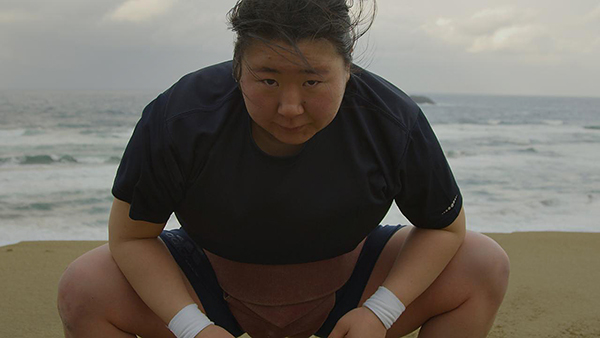With a condensed run time of 19 minutes, director and cinematographer Matt Kay crafts a visually stunning ode to the sport of sumo wrestling, and a winning testament to Hiyori Kon, a young woman trying to revolutionize the gendered perceptions of a traditionally male sport.
“Boys can aspire to be professional wrestlers,” Kon tells the audience at the beginning. “They can easily see a future in sumo. After elementary school, girls tend to quit. There weren’t that many wrestlers little girls could look up to.”
Kon, a 20-year-old sumo wrestling prodigy, is on a mission to become what she never had as a role model growing up — a professional female sumo wrestler.
The national sport of Japan, sumo is a form of competitive full-contact wrestling. It is fought in a ring known as a dohyō, where wrestlers lose if any part of their body, except the soles of their feet, touch the ground, or if they step outside of the ring. Steeped in tradition, it’s a tough, physical whirlwind of a sport. In Japan, where traditionally only men practiced sumo, women are banned from competing professionally.
“The ideal woman is modest and walks three steps behind the man,” Kon said of Japanese gender norms. “She’s not supposed to be visible.”
The documentary makes sure Kon is anything but invisible. “Little Miss Sumo” combines a voice-over with dynamic footage of Kon’s sumo wrestling prowess, placing her front and center. The audience is given a front row seat to bear witness to her athleticism. The structure weaves together shots of her working out in the gym, practicing with other competitors in the dohyō and the culmination of her hard work as she competes in the Sumo World Championships in Taiwan.
Kon is a commanding subject. She is bubbly, quick to joke about her weight and incredibly committed to her cause. While watching seals play at the Osaka Aquarium Kaiyukan, Kon tells her friends, “we have the same body fat percentage.” Early on, the audience watches grainy home video footage of an elementary school-age Kon competing and consistently winning in a montage of youth sumo competitions. “Little Miss Sumo” brings the point home that this sport is — and has been for almost her entire life — central to her identity.
A sport that may not be readily perceived as graceful is portrayed in a surprising light through the strategic use of slow motion. Using this technique, Kay captures the intensely physical moments of sumo — bare feet struggling for traction on the sandy dohyō floor, collisions of heads to chests and ripples of flesh meeting flesh — in a manner that brings beauty to an otherwise fast-paced, full-contact sport. Coupled with a haunting original score by Kwes, “Little Miss Sumo” illustrates sumo wrestling in an unexpectedly cinematic way.
“Little Miss Sumo” is so well put together and beautifully shot that its short running time will most likely leave audiences wishing for more with an admirable and inspiring core message. If the only letdown is the film isn’t long enough, it’s a safe bet “Little Miss Sumo” — just like Kon’s determination — is on track to accomplish a lot.





















